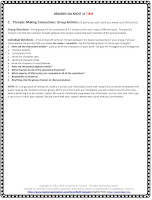Although I have said it before, two of my Teacher Appreciation Day posts share how much I love and support teachers and teaching. In light of all educators do and face, let me reiterate ...
“Teaching creates all other professions,” (Unknown). How
true this is! None of us knows how to do everything. That’s why we rely on the
knowledge and skills of others.
The air conditioning and heating repairman saves us from
sweltering on a sweaty August day or freezing in a single digit December when our
home units shudder to a halt.
The chef who creates a sumptuous dinner for us at our favorite
restaurant offers us from cooking every night.
The mechanic keeps our cars running.
The doctors and nurses bring us peace of mind and body when we-
and those whom we love- are ailing.
Pro-athletes’ knowledge and understanding of their sport
thrill us, musicians evoke our emotions and thespians move us from laughter to
tears.
We trust that police forces will protect us and fire
personnel will save our homes from severe damage.
We rely on those in the intelligence and counterintelligence
fields to keep criminals and terrorism at bay.
The military is full of men and women who ensure our
country’s safety and keep us strong.
Lifeguards prevent us from downing in bodies of water while
pilots and air traffic controllers make guarantee that we don’t fall from the
sky.
Those in the field of finance safeguard our money and
farmers’ and ranchers’ products fill our larders while writers and artists in
all fields creative nourish our minds and spirits.
The list of those who give our lives substance and value is
endless, dependant on our wants and needs. How did all of these people learn
their craft? Teachers taught them what
they needed to know.
In appreciation for all that teachers can do and choose to do,
and do, and do, here is an alphabetic listing of just a few of the people who enable
us to enjoy lives that are healthier,
happier, safer and enriched.
Athletes;
Air
conditioning and Heating service people; Air Traffic Controllers; Artists;
Architects;
Accountants;
Administrative Assistants; Auto Mechanics
Bookeepers;
Bakers;
Butchers
Chefs;
Caterers;
Counselors;
Clergy;
Computer
engineers, analysts an programmers; Curriculum designers; Construction managers and
workers; Chauffeurs
Doctors;
Dentists;
Dairy
farmers; Dieticians;
Database
administrators
Engineers;
Electricians;
Estheticians;
Epidemiologists;
Exterminators
(insects and rodents)
Fire
personnel; Financial
advisors; Farmers
Geologists;
Gynecologists;
Geneticists;
Historians;
Home designers; House decorators; Hair stylists; Human resources specialist;
Intelligence
and counter-intelligence personnel; Internists; Information Security Analysts;
Insurance
agents
Judges;
Journalists;
Janitors;
Jewelers;
Jockeys
Keyboard
operators; Kiln builders and operators; Kitchen
supervisors
Lifeguards;
Lawyers;
Laboratory
technicians
Musicians;
Military
men and women; Mathematicians; Meteorologists; Marketing researchers and
analysts; Manicurists;
Maintenance
workers
Nurses;
Nutritionists
Obstetricians;
Ophthalmologists;
Opticians;
Occupational
Therapists
Pilots; Police;
Professors;
Physicists;
Psychologists,
Psychiatrists;
Physical
Therapists; Physician
Assistants; Pharmacists;
Plumber;
Paramedics;
Principals
Quality
Control personnel; Quilters
Ranchers;
Respiratory Therapists; Real
Estate agents; Receptionists; Restaurant servers
Software
developers; Scientists; Social
Workers; Statisticians;
Speech
Therapists
Thespians;
Teachers;
Technology
specialists; Taxi drivers
Urologists;
Underwriters;
Upholsters;
Utility
workers
Veterinarians;
Vacuum
Cleaner service people; Van drivers
Writers;
Web
developers
X-Ray
Technicians
Yacht
designers and builders
Zoologists
And the list goes on, and on and on.
What do all of these professions and careers have in common? They include people who do what they do because
teachers taught them how to read, write, add and subtract, think, analyze, and
do.
Jacques Barzun, a French-born American historian, educator and teacher
trainer said, “Teaching is not a lost art, but the regard for it is a lost
tradition.”
Teachers Appreciation celebrations –be they a Day or a Week-remind us to thank teachers for all that
they can do, and all that they choose to do, so that we can successfully do
what we do. What a terrific tradition.
Without educators, we all might as well be living under
rocks, grubbing for our food, fending off our enemies in games of Who Has the
Biggest Stick, and waiting for some smarter person to discover fire while we
die young.
During my school days, my peers and I always understood,
even if we didn’t always like the journey or the guide, that our teachers would
lead us down the Yellow Brick Road to the Emerald City. Our treasure, and theirs, was the light in
our eyes when we got it.
Teachers,
- You create your magic every time you share your knowledge, abilities and skills with your students and peers.
- You create joyful, inspiring and safe classrooms for all of your charges - especially for those who might not experience such pleasures in their personal worlds.
- You teach us to live up to our potentials, to follow our dreams, and to strive to make this world a better place.
We need your magic- and we always will.
In your honor, Teachers pay Teachers is holding a Teacher Appreciation Sale on May 3rd-4th. Stop in and browse. Give yourself the gift of time with a few lessons and activities.
Thank you, teachers!














































